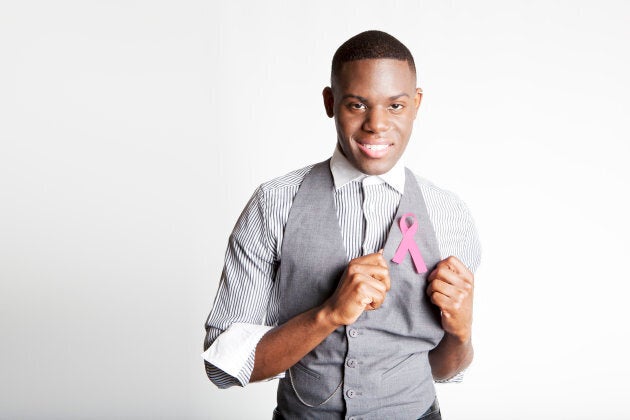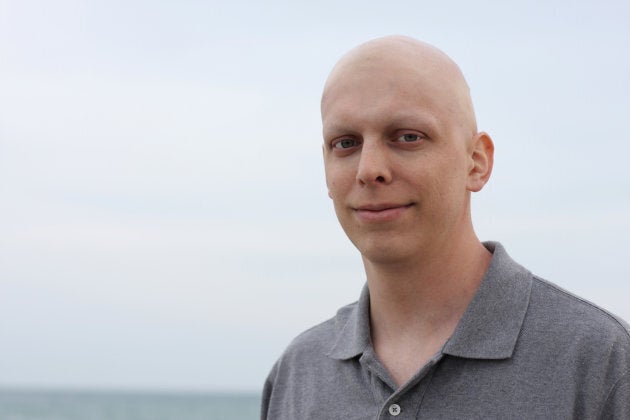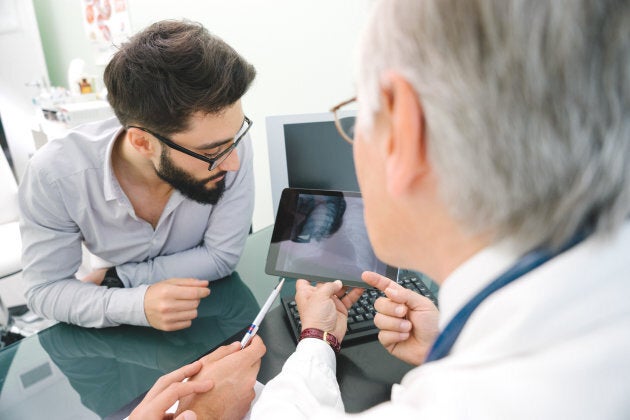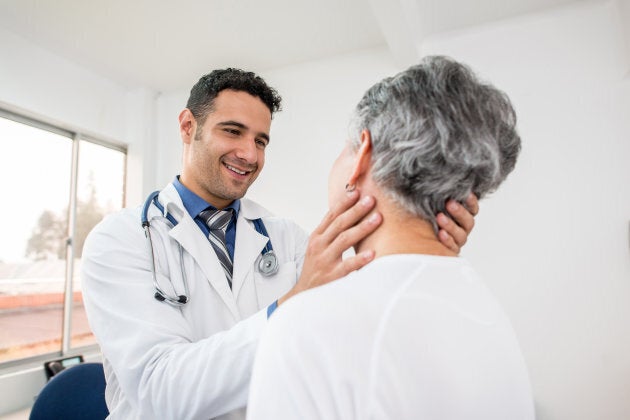More common in older men, male breast cancer is 100 times less common than breast cancer in women, but does happen to men of all ages and stations in life.
About 230 men in Canada develop breast cancer each year and about 60 die of the disease, according to the Canadian Cancer Society.
About 230 men in Canada develop breast cancer each year.
As in women, early diagnosis of breast cancer in men is an important factor towards a positive prognosis. According to the Canadian Cancer Society, men who are diagnosed at Stage I have a five-year survival rate of 96 per cent, but at Stage IV that rate is just 24 per cent.

For that reason, it's important for men to know what may put them at risk of developing breast cancer, and which symptoms warrant a visit to their doctor. Read on to learn more about this relatively uncommon, but serious, disease.
Men do have breast tissue
Everyone is born with a small amount of breast tissue; in women, this grows in puberty, but a small amount does remain in men. Trans men also have breast tissue and should watch for potential symptoms of breast cancer as well. Trans and non-binary men and women should speak to a trusted health professional about their personal risk profile.
What types of breast cancer can men develop?
According to the Mayo Clinic, there are three types of breast cancer men can develop: ductal carcinoma, lobular carcinoma, and Paget's disease of the nipple.

Ductal carcinoma, which begins in the milk ducts, makes up nearly all cases of breast cancer diagnosed in men. Lobular carcinoma begins in the milk-producing glands of the breast, and is quite rare in men because they have few of these lobules. And Paget's disease is another rare cancer that forms in the milk ducts and spreads to the nipple, where it causes skin to become crusty and scaly.
Risk factors for men
Breast cancer is more common in older men — according to the Mayo Clinic, peak incidence is between the ages 68 to 71. People who take estrogen-containing drugs have a higher risk level, as do those with a family history of the disease.

Liver disease, obesity, radiation exposure, testicle disease or surgery, and Klinefelter's syndrome are other risk factors for men, according to the American Cancer Society.
The symptoms can be different
A lump or swelling that is usually (but not always) painless, discharge from the nipple, skin dimpling or puckering, nipple inversion or retraction, and/or redness or scaling on the nipple or breast are the primary symptoms of breast cancer in men, according to the American Cancer Society.
Watch for signs of spreading
Breast cancer in men can spread beyond the breast tissue and into the lymph nodes, or beyond, the American Cancer Society says. If cancer has spread you may also see signs like a lump or swelling in lymph nodes in the armpit or around the collar bone — even if you can't feel one on the chest itself.

Unusual swelling of the lymph nodes should be examined by a physician.
There are other potential causes for these symptoms
A man may notice swelling in his chest that is not caused by cancer. Most lumps in the breast in men are the result of gynecomastia, an enlargement of the breast tissue that is caused by hormone imbalances and is not life threatening.
Get seen early
When caught early, the prognosis for men with breast cancer is good — particularly if it hasn't spread beyond the breast tissue. But men may delay seeing a doctor even after they notice symptoms, for a variety of reasons.

For example, they may be embarrassed by symptoms that can include swelling in the chest, or may not even realize that it is possible for them to develop breast cancer.
Does BRCA play a role?
Many people are aware that women with the BRCA2 gene have an increased risk of developing breast or ovarian cancer. But men can also inherit the BRCA2 gene, which increases their risk for breast and prostate cancer.
Men can also inherit the BRCA2 gene, which increases their risk for breast and prostate cancer.
If you have parents or siblings with the BRCA2 gene, a genetic counsellor can provide more specific information and testing.
Getting a diagnosis
Diagnosing male breast cancer is similar as for women: your doctor may do a clinical breast exam to feel for lumps or swelling, a biopsy may be recommended to test for cancerous tissue, and a mammogram or ultrasound may be used to look for irregularities.

If cancerous tissue is found, further testing will be needed to determine the type of the cancer and its stage, which informs treatment options.
Treating male breast cancer
Treatment options for male breast cancer depend on a variety of factors including the type of cancer, the stage of the disease, and your personal medical history and preferences. Possible treatments include surgery, chemotherapy, radiation, and hormone therapy.
Also on HuffPost: